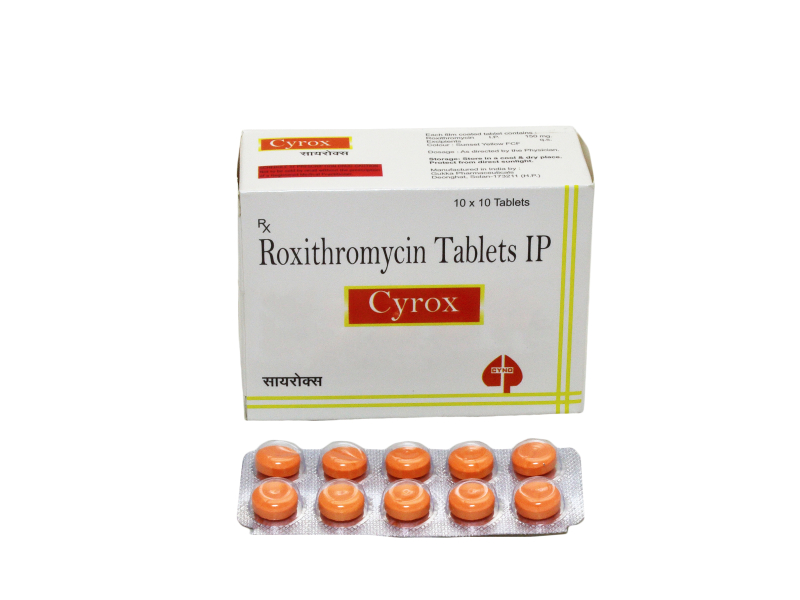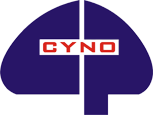CYROX
Roxithromycin (150 mg)
Cyrox 150mg Tablet is an antibiotic used to treat various types of bacterial infections. It is effective in resolving most infections of the respiratory tract, ear, nose, throat, lungs, and skin. It stops the growth of infection-causing bacteria and thus resolves the symptoms.
Roxithromycin is a semi-synthetic macrolide antibiotic. It is used to treat respiratory tract, urinary and soft tissue infections. Roxithromycin is derived from erythromycin, containing the same 14-membered lactone ring. However, an N-oxime side chain is attached to the lactone ring.

Mechanism of Action
Roxithromycin is a semi-synthetic long-acting macrolide antibiotic. It binds to the 50S subunit of the bacterial ribosome and inhibits translocation. They interfere with the transfer of the newly formed peptide chain from the A site to the P site and fail to uncover the A site because this site is unable to bind with the aminoacyl T RNA complex. This leads to premature termination of the amino acid chain and inhibits protein synthesis.
Onset Of Action 1 – 2 hours
Indications
1. Pneumonia 2. Tonsilitis 3. Pharyngitis 4. Bronchitis 5. ENT infection 6. Tetanus 7. Diphtheria 8. Sinusitis 9. Gonorrhea 10. Wound and burn infection 11. Skin and soft tissue infections 12. Pertussis 13. Urogenital infection
Pharmacokinetic Properties:
Absorption: Roxithromycin is absorbed after oral administration. Distribution: It is widely distributed in the body in protein-bound form. Metabolism: The small part undergoes metabolism. Excretion: It is excreted mainly through bile and also through urine and breast milk.
Drug-Drug interactions:
Digoxin: Increases absorption. Midazolam: Extends its half-life. Terfenadine: Serum levels leading to ventricular arrhythmias. Disopyramide: Displaced from its protein-bound sites.
Precautions:
Hepatic dysfunction
Fertility:
Dosage:
Adult: 300 mg in two divided doses for 1 – 2 week Children: 4 – 8 mg/kg body weight/day in divided dose
Duration of action:
8 – 12 hours
Adverse Reaction:
1. Nausea 2. Vomiting 3. Diarrhea 4. Epigastric pain 5. Fever 6. Rash 7. Urticaria 8. Increase in liver enzyme concentrations
Storage:
Store in a cool dark place. Keep away from heat and moisture.
Overdosage:
Give supportive measures and treatment
Contraindications:
- Hypersensitivity to Roxithromycin and other macrolides 2. Use of ergotamine type compound along with Roxithromycin
Warnings:
Inform your doctor if it does not stop or if you get blood in your stool. Stop taking Roxid 150 Tablet and inform your doctor immediately if you develop an itchy rash, swelling of the face, throat, or tongue, or difficulty breathing.
Pregnancy
Use with caution
Breast Feeding
Use with caution
Old Age
May be used
